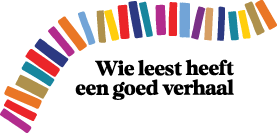Thinking of Holland, would you believe that, in 1934, the Dutch government implemented two new law sections, especially because abuses against Jews got a kind of 'epidemic character'? The contrast between the traditional image of Dutch tolerance and the high number of Jewish deportees during World War II has created the notion of the 'Dutch paradox'. During the German occupation antisemitism grew, and burst into the open after the liberation. Illustrative was the insult 'They have forgotten to gas you', a first, radical expression of how, after 1945, the Shoah or Holocaust was turned against the Jews.
In the eighties the identification of 'the Jew' and the gas chamber spread from the streets to chants in football stadiums, to pamphlets and satire. Subsequently it showed up in anti-Israel demonstrations in the slogan 'Hamas, Hamas, all the Jews to the gas'. A variety of antisemitic manifestations among Dutch Moroccans and Turks prove that traditional and new anti-Jewish stereotypes blended also among migrant communities. Both the Shoah and Israel appear to have become crucial points of attachment in postwar antisemitism in the Netherlands which, in this volume, is analysed as a multifunctional and multicultural phenomenon with a Dutch flavour.
We tend to think of the Dutch as a tolerant people, open to cultural and religious diversity. Yet, in 1934 the Dutch government was forced to pass laws explicitly designed to protect Jews against attacks, just one manifestation of a surprisingly virulent anti-Semitism that emerged before and during World War II. This collection brings together a group of historians to show how that historical prejudice continued to resonate through the postwar years, from anti-Jewish chants at football matches to contemporary attacks on Dutch Moroccans, Turks, and Poles that reveal the transference of violent prejudice to migrant communities.
In the eighties the identification of 'the Jew' and the gas chamber spread from the streets to chants in football stadiums, to pamphlets and satire. Subsequently it showed up in anti-Israel demonstrations in the slogan 'Hamas, Hamas, all the Jews to the gas'. A variety of antisemitic manifestations among Dutch Moroccans and Turks prove that traditional and new anti-Jewish stereotypes blended also among migrant communities. Both the Shoah and Israel appear to have become crucial points of attachment in postwar antisemitism in the Netherlands which, in this volume, is analysed as a multifunctional and multicultural phenomenon with a Dutch flavour.
We tend to think of the Dutch as a tolerant people, open to cultural and religious diversity. Yet, in 1934 the Dutch government was forced to pass laws explicitly designed to protect Jews against attacks, just one manifestation of a surprisingly virulent anti-Semitism that emerged before and during World War II. This collection brings together a group of historians to show how that historical prejudice continued to resonate through the postwar years, from anti-Jewish chants at football matches to contemporary attacks on Dutch Moroccans, Turks, and Poles that reveal the transference of violent prejudice to migrant communities.
























